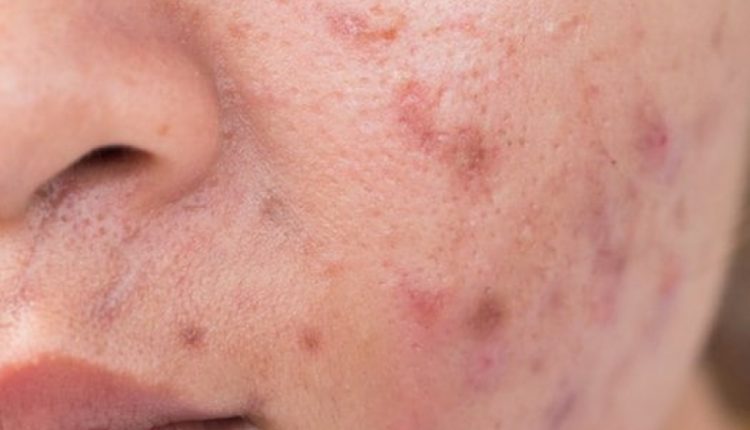
Causes and remedies for cystic acne
Acne is a dermatological condition that is very common among the world’s population and affects approximately 85-90% of adolescents
This inflammatory condition, which particularly affects the pilosebaceous unit (the hair follicle), can occur in multiple forms, each characterised by specific manifestations, lesions and severity.
One of the most severe forms of this chronic disease is cystic or nodulocystic acne.
What is cystic acne
Cystic or nodulocystic acne, so called because sometimes the types of lesions are associated, is a particularly severe form of acne, characterised by the presence of cysts.
There are numerous grading systems for acne (Global Acne Grading System, for example) that take into account the types of lesions that the pathology leaves on the patient, scoring them according to severity.
From this data, useful indices are obtained for a better and correct characterisation of the disease.
According to these classification systems, nodulocystic acne is characterised as one of the most severe forms of acne due to the type of lesions (it tends to leave scarring), often characterised by the concomitant presence of cysts and nodules (inflammatory processes).
The term cyst identifies lesions that
- are larger than 5 mm in diameter
- have a pink colour on the surface;
- are not characterised by the presence of pus and purulent material;
- emerge leaving a scar.
These are often associated with nodular lesions (or nodules) which instead
- have a brighter colour, erythematous and red on the surface;
- size up to several centimetres in diameter.
Nodules often derive from the rupture of follicular cysts due to a foreign body reaction, then form first a suppurative, then a granulomatous, and finally a fibrotic process, which also leaves a scarring outcome,’ the specialist clarifies.
Acne conglobata
Nodular and cystic lesions may congregate, sometimes in a single body area, and recreate the typical appearance of abscesses, i.e. conformations of sterile pus.
This occurs more frequently in the male sex and characterises the picture of so-called acne conglobata (characterised by confluent abscess-like lesions).
This type of severe acne can affect different body districts:
- face;
- trunk;
- upper sternal thoracic part;
- upper dorsal part;
- root of the upper limbs.
Sometimes we see localisation of acne conglobata cystic nodules on the scalp, which constitute what is known as folliculitis dissecans, in which large, abscessualised cysts form, giving rise to alopecic scarring areas.
What are the causes of cystic acne?
Nodulocystic acne is considered a multifactorial disorder, i.e. there are many causes that can lead to it.
Among the causes, the following play an important role
- follicular hyperkeratinisation
- microbial colonisation, in particular the presence of the bacterium cutibacterium acnes;
- excessive sebum production, hyperseborrhoea;
- complex inflammatory mechanisms at the level of the pilo-sebaceous unit;
- neuroendocrine factors;
- genetic mechanisms.
In addition to pathological factors, which condition the formation of lesions, there are other elements that may aggravate or reactivate the pathology: stress may be a worsening factor.
What are the most effective remedies
Guidelines indicate that the treatment of nodulocystic acne, the most severe and severe form, should be systemic therapy.
When lesions are present, widespread and numerous, it is difficult to intervene simply with local therapy.
The indication for nodulocystic acne, classified as severe acne, is the use of isotretinoin, an oral drug, a retinoid, derived from vitamin A.
It is a drug that should be used with caution and under strict medical supervision, as it is burdened by the possibility of a number of side effects.
It is a keratogenic drug and must be closely monitored; in women of childbearing age, for example, it must be accompanied by the use of contraceptives.
For the use of this therapy, the candidate patient must be carefully evaluated; among other things, monitoring involves a series of blood tests that monitor
- liver function
- lipid metabolism
- muscle function
Standard treatment is based on isotretinoin and its effect should be long-lasting.
When, in addition to the cystic element, nodular elements are also associated, antibiotic therapies are sometimes introduced, exploiting their anti-inflammatory effect.
How to prevent severe cystic acne
There are certain precautions that can prevent the appearance of cystic acne in its most severe form, and these are
- avoid rubbing (by clothing, sports equipment,…) in areas already affected by the pathology at an early stage. Rubbing, in fact, creates a greater chance of triggering an inflammatory process;
- avoid the application of occlusive substances to the skin; these may favour the formation of comedonal and microcystic retentional lesions, which are normally the first stage of the pathology;
- early treatment of acne manifestations.
By following these steps we can prevent serious pathology by facilitating the process of treatment and healing of the lesions.
Read Also
Emergency Live Even More…Live: Download The New Free App Of Your Newspaper For IOS And Android
Epidermolysis Bullosa And Skin Cancers: Diagnosis And Treatment
Skin: What To Do In Case Of Folliculitis?
Childhood Psoriasis: What It Is, What The Symptoms Are And How To Treat It
Dermatological Examination For Checking Moles: When To Do It
What Is A Tumour And How It Forms
Rare Diseases: New Hope For Erdheim-Chester Disease
How To Recognise And Treat Melanoma
Moles: Knowing Them To Recognise Melanoma
Skin Melanoma: Types, Symptoms, Diagnosis And The Latest Treatments
Melanoma: Prevention And Dermatological Examinations Are Essential Against Skin Cancer
Remedies And Causes Of Couperose On The Face
Acne Scars: How Effective Is The Laser?



